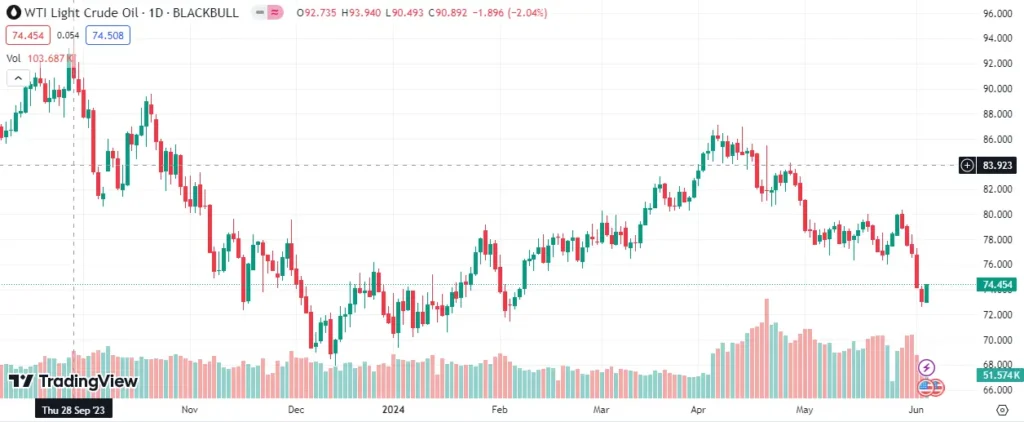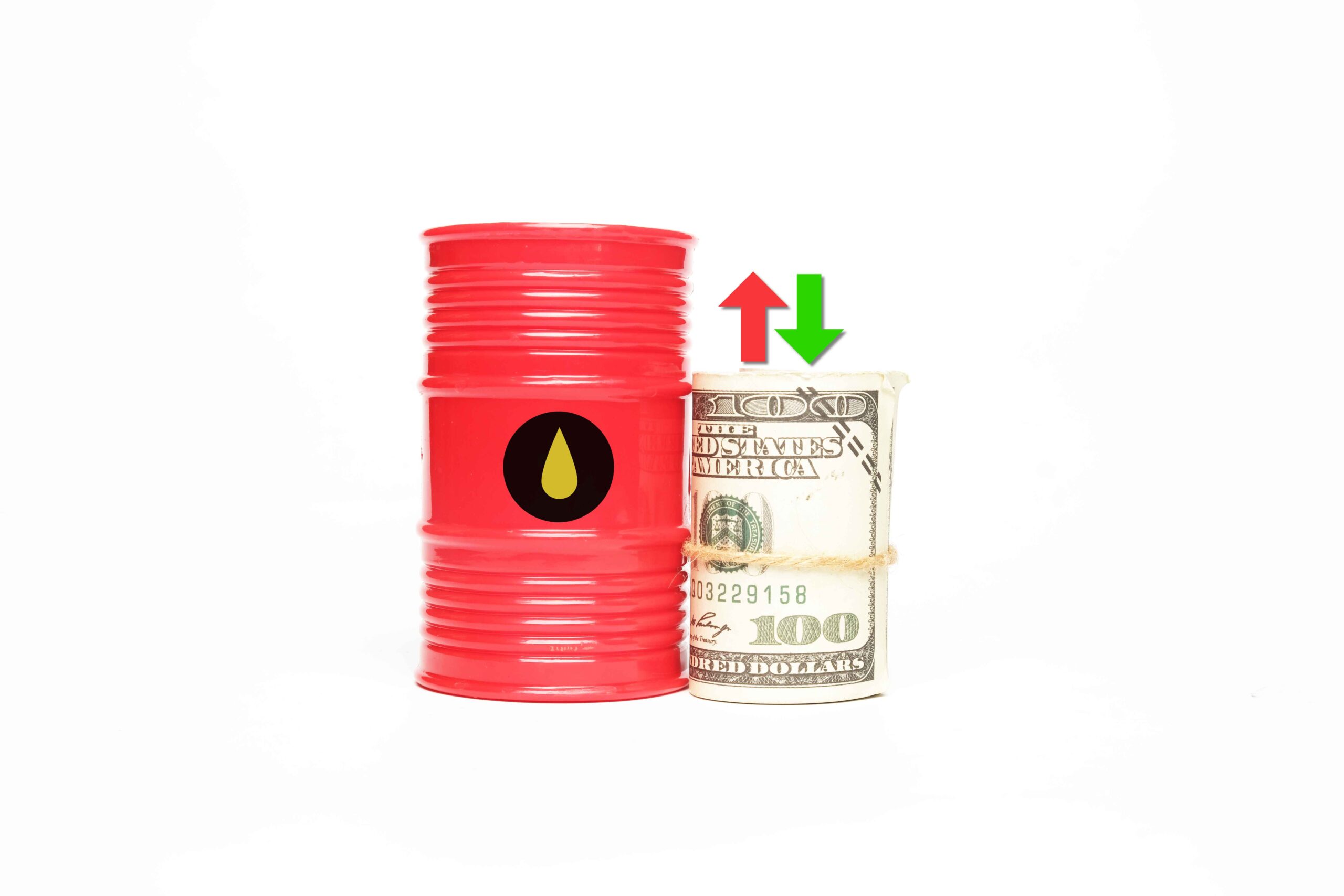Oil price dynamics have increasingly become a focal point for both investors and policymakers worldwide. With recent shifts in global supply and demand, understanding these dynamics is crucial. As oil prices fluctuate, they impact economies on a large scale. The intricate dance of oil price dynamics is often influenced by several factors. These include OPEC+ supply decisions and changes in US crude stockpiles.
OPEC+ Supply Decisions and Their Impact
OPEC+ has played a pivotal role in shaping oil price dynamics through its supply decisions. The consortium of oil-producing nations frequently adjusts supply to manage oil prices effectively. Recently, OPEC+ announced plans to boost supply in October, a move that initially led to a drop in oil prices. However, the complexity of the market suggests that these decisions are not always straightforward.
Analysts often scrutinize OPEC+ supply decisions to predict their effects on oil price dynamics. Despite the planned increase in supply, market reactions can be unpredictable. This is due to the delicate balance required to match global oil supply with demand. OPEC+ is acutely aware of these dynamics and often makes calibrated decisions to stabilize or stimulate oil markets.
These supply decisions are not made in isolation. They consider global economic indicators, geopolitical tensions, and technological advancements in energy production. Each factor can significantly alter the expected impact of OPEC+’s decisions on oil price dynamics.
Moreover, OPEC+ carefully monitors other major players in the oil market, such as the United States and Russia. Their production levels and export policies can also influence global oil prices. As a result, OPEC+’s supply decisions must account for these external variables to maintain market equilibrium.
Further Insights into OPEC+ Strategy
OPEC+ also faces internal challenges that affect its supply decisions. Member countries have differing economic needs and political agendas, which can lead to conflicting priorities within the group. Navigating these internal dynamics is crucial for OPEC+ to present a united front in its supply strategy.
In addition, the increasing focus on renewable energy sources and the global transition towards greener alternatives put pressure on OPEC+. The consortium must adapt its strategies to stay relevant in a changing energy landscape. This may involve rethinking how they manage oil supply in light of decreasing long-term demand projections.
OPEC+’s ability to influence oil price dynamics also hinges on its credibility and the market’s perception of its commitment to managing supply. Any signs of discord or inability to adhere to agreed production cuts can undermine its effectiveness. Therefore, maintaining cohesion among its members is as crucial as the supply decisions themselves.
In conclusion, OPEC+ plays a critical role in shaping global oil price dynamics through its supply decisions. While these decisions aim to stabilize or boost oil prices, the actual outcomes can vary due to a complex interplay of global factors. Understanding these dynamics is key to predicting future trends in the oil market.
The Role of US Crude Stockpiles in Oil Markets
US crude stockpiles are a critical indicator of oil price dynamics. When the US Energy Information Administration reports an increase in stockpiles, it usually indicates a surplus of oil, which can depress prices. Recently, a reported expansion in US crude stockpiles by 1.23 million barrels signaled potential downward pressure on oil prices.
However, the interpretation of changes in US crude stockpiles isn’t straightforward. While an increase in stockpiles can suggest decreased demand, other factors, such as seasonal changes or geopolitical events, can also influence stock levels. Investors and analysts closely monitor these reports to gauge the short-term direction of oil price dynamics.
The fluctuations in US crude stockpiles provide insights not only into domestic production but also into global oil flow patterns. An unexpected increase in stockpiles might reflect not just reduced domestic demand but also increased imports or decreased exports. Thus, these stockpile levels are watched as a barometer for both U.S. and global oil market health.
Moreover, changes in US crude stockpiles can also trigger reactions in the futures markets, where oil prices are often hedged. Traders might adjust their positions based on anticipated changes in stockpile reports, leading to price volatility. This interplay enhances the complexity of predicting oil price dynamics based on stockpile data alone.
Analyzing Trends in US Crude Stockpiles
Over the years, the strategic use of US crude stockpiles has also been a tool for government policy. During periods of high oil prices, the U.S. government has occasionally released reserves to stabilize market prices. Conversely, in times of low prices, it might purchase oil to replenish these reserves, indirectly supporting prices.

Furthermore, technological advancements in drilling and extraction have impacted US crude production rates, which in turn influence stockpile levels. The shale oil boom, for instance, significantly increased U.S. oil production, leading to higher stockpiles and lower prices globally.
Additionally, US crude stockpiles also reflect broader economic conditions. In times of economic downturn, oil consumption decreases, leading to growing stockpiles. Conversely, an economic boom typically leads to decreased stockpiles as demand surges.
In conclusion, while US crude stockpiles are a direct indicator of supply and demand balances, their impact on oil price dynamics extends far beyond simple arithmetic. They encapsulate a range of economic, technological, and geopolitical factors, each playing a role in the complex equation that determines oil prices. Understanding these nuances is crucial for stakeholders in the oil market, from policymakers to investors.
Addressing Oil Demand Concerns
Oil demand concerns are central to understanding oil price dynamics. Recent global events have led to significant uncertainty in oil demand. This uncertainty often results in volatility in oil markets. Concerns about weaker demand can lead oil prices to fall, as seen with the recent decisions by OPEC+ to adjust supply.
Furthermore, oil demand concerns are not limited to economic downturns. Changes in energy policies, technological advancements in renewable energy, and shifts in consumer behavior also play roles. Each of these factors can undermine oil demand, thereby influencing oil price dynamics.
The impact of these shifts is profound and wide-reaching. As nations increasingly commit to reducing carbon emissions, the transition towards renewable energy sources accelerates. This shift directly affects the long-term demand for oil, posing challenges for oil-producing countries and industries reliant on fossil fuels.
Additionally, the adoption of electric vehicles (EVs) represents a significant threat to oil demand. As more consumers opt for EVs over traditional gasoline-powered vehicles, the demand for oil could see a substantial decline. This trend is supported by governmental policies in major markets promoting EVs through subsidies and regulations.
Economic Factors and Consumer Behavior
Economic factors also play a crucial role in shaping oil demand. During periods of robust economic growth, industries and consumers increase their energy usage, driving up oil demand. Conversely, economic recessions can lead to decreased industrial activity and consumer spending, reducing the demand for oil.
Consumer behavior, influenced by environmental awareness and economic factors, also affects oil demand. An increasing number of consumers are choosing more energy-efficient products and services, reflecting a broader shift towards sustainability. This change in consumer preferences further complicates predictions of oil demand.
Moreover, geopolitical events can disrupt oil supply chains and affect prices, indirectly influencing oil demand. For example, conflicts in oil-rich regions can lead to spikes in oil prices, prompting consumers and businesses to seek alternatives.
The Future of Oil Demand
Looking ahead, addressing oil demand concerns will require a multifaceted approach. Stakeholders in the oil industry must consider not only immediate economic conditions but also long-term trends in technology and consumer behavior. Additionally, the oil sector must adapt to increasingly stringent environmental regulations, which aim to curb fossil fuel use in favor of cleaner alternatives.
In conclusion, oil demand concerns are a pivotal aspect of the complex system governing oil price dynamics. Understanding these concerns involves analyzing a diverse array of factors, from global economic conditions to individual consumer choices and technological advancements. As the world increasingly moves towards sustainable energy solutions, the oil industry must navigate these changes strategically to remain viable in a transitioning energy market.
Seeking Crude Price Support in Turbulent Times
Market participants often look for crude price support during times of volatility. Support levels are prices at which buyers consistently enter the market, believing the price is low enough to warrant a purchase. These levels can stabilize oil price dynamics temporarily, even in uncertain times.
Crude price support is crucial for preventing a free fall in prices, which can be detrimental to oil-exporting economies. Analysts and traders use historical data and current market trends to identify these support levels. By doing so, they can make informed predictions about future movements in oil price dynamics.
Understanding these support levels helps stakeholders manage risk and plan strategically. For example, when oil prices approach these levels, trading volumes typically increase as buyers anticipate a potential rebound. This activity can provide a cushion against further price declines, playing a critical role in the overall stability of the oil markets.
Furthermore, crude price support is not only watched by traders and investors but also by policymakers. Governments of oil-dependent countries monitor these levels closely. They may intervene in the market if prices drop too low, using tools like production cuts or strategic reserves releases to buoy the market.
The Influence of External Factors on Crude Price Support
External factors such as geopolitical tensions or unexpected shifts in global oil supply can swiftly undermine established support levels. For instance, a sudden increase in production from a major oil-producing country can push prices below support levels, triggering sell-offs and increased market volatility.
Similarly, global economic indicators, such as manufacturing data and GDP growth rates, also influence crude price support. Strong economic data can bolster oil demand forecasts, strengthening support levels, while weak data can have the opposite effect.
In addition to economic and geopolitical influences, technological advancements in energy extraction and consumption also play a role. Innovations that make oil extraction cheaper or that increase the efficiency of oil use can shift demand dynamics, thereby impacting crude price support levels.
Navigating Future Challenges in Oil Price Dynamics
Looking ahead, the challenge for market participants will be to adapt to rapidly changing conditions that can affect crude price support. This includes staying informed about geopolitical developments, technological advancements, and trends in global energy policies.

Adapting to these changes requires a keen understanding of the market and a flexible approach to trading and investment. It also calls for a collaborative effort among nations to manage the global oil supply responsibly and sustainably.
In conclusion, seeking and maintaining crude price support in turbulent times is a complex, dynamic process influenced by a multitude of factors. Stakeholders must remain vigilant and proactive to navigate these challenges effectively, ensuring stability and profitability in the global oil markets.
The Future of Oil Price Dynamics
Looking forward, oil price dynamics will continue to be influenced by a mixture of supply and demand factors. OPEC+ supply decisions and US crude stockpiles will remain key drivers. Additionally, global economic health and technological changes will also play significant roles.
As the world gradually shifts towards more sustainable energy sources, oil markets may face new challenges. The transition may lead to a long-term decrease in oil demand, fundamentally altering oil price dynamics. However, for the foreseeable future, oil will likely remain an essential component of the global energy mix.
In conclusion, oil price dynamics are shaped by an array of complex, interdependent factors. Understanding these dynamics requires a nuanced approach that considers both macroeconomic indicators and geopolitical developments. As the market continues to evolve, staying informed and adaptable will be crucial for anyone involved in the oil industry.
Click here to read our latest article on $27000 Gold by 2026

